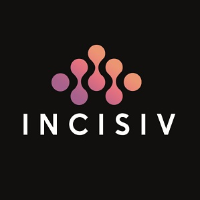Harnessing AI and agile strategies, restaurants can exceed customer expectations and lead the industry with personalized experiences, seamless operations, and adaptive technology platforms. This approach ensures continuous improvement and positions leading restaurants as industry trailblazers.

In a rapidly changing dining landscape, restaurants must harness the power of innovation and agility to thrive. Modern diners demand more personalized experiences, seamless operations, and quick adaptations to new trends. By embracing advanced technologies and fostering a culture of continuous improvement, leading restaurants are setting new standards in the industry. Discover how these trailblazers are transforming their operations and delighting customers in unprecedented ways.
Harnessing AI for Personalization and Efficiency
AI has seamlessly integrated into many aspects of our daily lives, from virtual assistants like ChatGPT to recommendation engines on streaming platforms like Netflix and e-commerce sites like Amazon. This transformative technology is also revolutionizing the restaurant industry, offering new ways to enhance personalization and efficiency. Here are key strategies to harness AI in restaurants:
- Personalized Customer Experiences
AI can analyze customer data to provide personalized menu suggestions and tailored marketing efforts. By understanding customer preferences and behaviors, restaurants can offer a more personalized dining experience. Currently, 39% of restaurants use recommendation engines to suggest related or preferred items based on customer history and preferences, significantly enhancing customer satisfaction and loyalty. - Dynamic Staff Scheduling
AI can forecast customer flow, allowing for optimized staff scheduling that reduces overhead and improves service efficiency. Predictive analytics help ensure that the right number of staff is available during peak times without overstaffing during slower periods. 23% of restaurants use predictive analytics for optimized staff scheduling, highlighting the growing importance of this technology in managing labor costs effectively and showing that this is a missed opportunity for the remaining 77% of restaurants. - Optimizing Inventory Management
AI-driven inventory management systems can reduce waste and ensure a fresh supply of ingredients by predicting demand and adjusting orders accordingly. This leads to more efficient stock management and less spoilage, directly impacting the bottom line. Data shows that only 29% of restaurants use AI-driven inventory management to maintain optimal stock levels, demonstrating the value of this approach in operational efficiency and highlighting the opportunity for others to adopt this technology.
Cultivating an Agile Response to Market Trends
In the fast-paced restaurant industry, the ability to quickly adapt to changing market trends is essential. Leading restaurants are adopting agile methodologies to stay ahead of the curve. Restaurants can cultivate agility through:
- Rapid Concept Testing
The ability to quickly roll out and evaluate new dining concepts or menu items is crucial for staying relevant. Establishing a dedicated team for rapid prototyping and concept testing allows restaurants to gather real-time feedback and make swift adjustments. While 79% of restaurants recognize the ability to prototype and test new dining experiences as critical, only 22% are satisfied with their current testing ability. This data point underscores the significant gap and highlights the need for rapid concept testing from a restaurant perspective. - Regular Technology Trials
Identifying and trialing emerging technologies regularly can enhance operational efficiency and guest satisfaction. From AI-driven customer service tools to kitchen automation, the benefits of staying updated with the latest technology are immense. There is a significant gap between recognizing the importance of A/B testing and being satisfied with current capabilities. While 65% find it important, only 33% are satisfied with their current technology infrastructure. - Innovation Workshops
Monthly innovation workshops where staff from various departments pitch ideas for new trends, technologies, or menu items can foster a culture of creativity and continuous improvement. These sessions not only generate fresh ideas but also engage employees in the innovation process, making them more invested in the restaurant's success.
Embracing Open Technology Platforms
In the rapidly evolving restaurant industry, the flexibility and adaptability of open technology platforms are becoming essential. These platforms enable restaurants to integrate new technologies seamlessly, maintain consistency across locations, and quickly respond to market demands. Here are the key benefits of embracing open technology platforms:
- Adaptive Tech Frameworks for Seamless Integration
Open technology platforms provide the flexibility to effortlessly incorporate cutting-edge technologies and services. This adaptability ensures that restaurants remain at the forefront of industry advancements, allowing for quick integration of new devices and software. While 66% of restaurants find quickly integrating new technologies important, only 41% are currently satisfied with their ability to do so. - Consistency Across Franchise Locations
Maintaining uniform operational standards and customer experiences across multiple locations is crucial for franchise success. Open platforms enable centralized management and consistent deployment of technologies, ensuring that every franchise delivers the same high-quality experience. This consistency reinforces brand integrity and customer loyalty. - Swift Adaptation to Market and Local Demands
The flexibility of open platforms allows restaurants to quickly respond to emerging trends and consumer preferences. Whether it's adopting new payment systems, integrating delivery services, or implementing customer engagement tools, open platforms support rapid adaptation. Despite the importance placed on this ability, 78% of restaurants find deploying new technologies or experiences critical. However, only 34% are satisfied with their current infrastructure.
Innovating for the Future of Dining
Embracing innovation and agility is not just an option but a necessity for modern restaurants aiming to thrive in a competitive market. By leveraging AI for personalized experiences, fostering a culture of rapid innovation, and utilizing adaptive technology platforms, restaurants can set new industry standards and exceed customer expectations. The path to success lies in continuous improvement and the courage to lead with forward-thinking strategies.
For more detailed insights and strategies, download the State of the Industry: Future of In-Restaurant Dining report by Incisiv, in partnership with Toshiba Global Commerce Solutions. Are you ready to transform your restaurant's future?
All the statistics mentioned above are based on first-party research conducted for this report.





